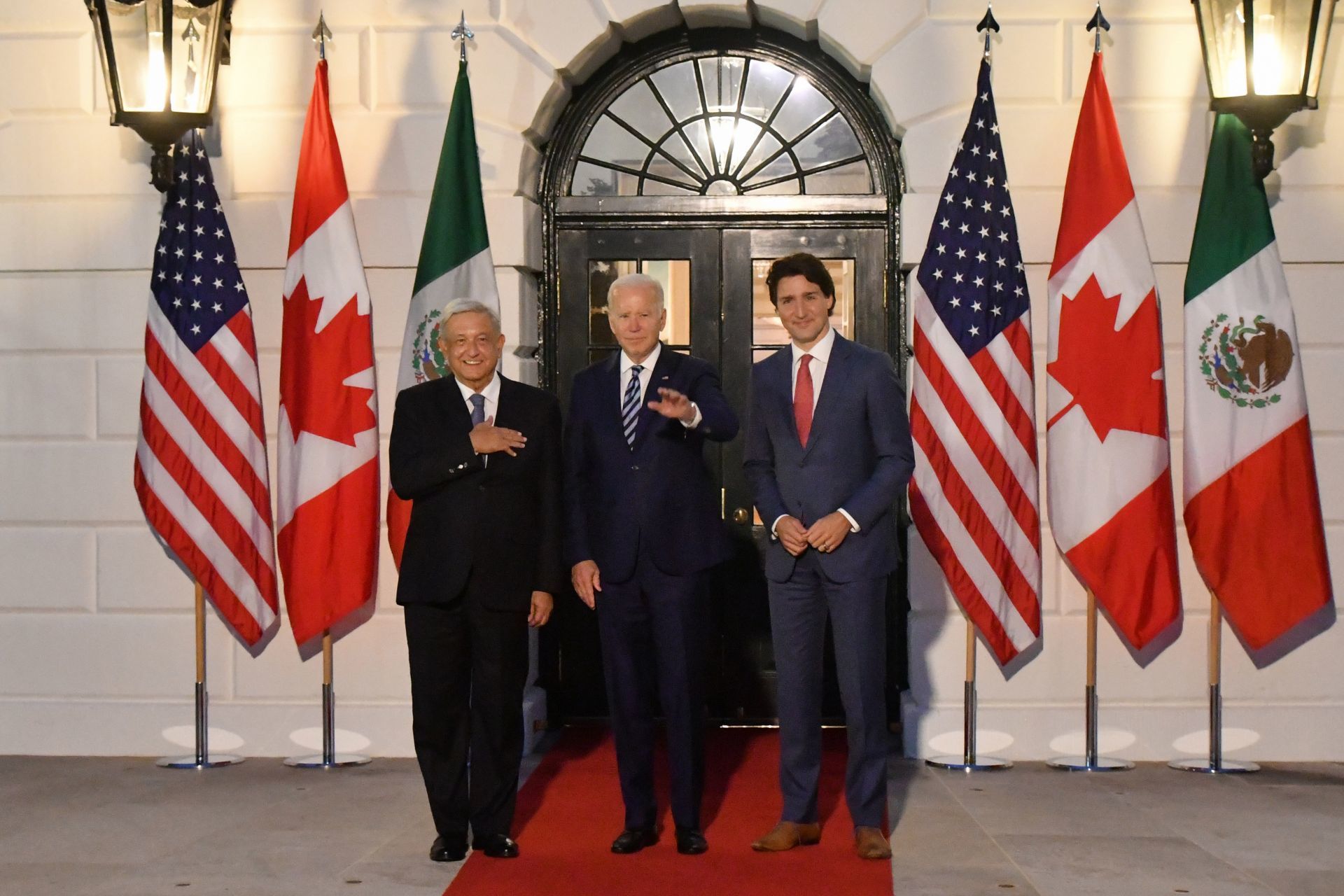
Last month, president Joe Biden hosted the latest North American Leaders’ Summit (NALS) in Washington, the first in over five years. More than anything, the Summit marked a renewed spirit of cooperation in the trilateral relationship between Mexico, Canada and the US, after a couple of rocky years of tension and contentious rhetoric. Mexican president Andrés Manuel López Obrador’s first face-to-face meetings with both Prime Minister Justin Trudeau and president Biden went by without any major incident (aside from a minor faux pas involving his translator). López Obrador did pleasantly surprise some people back in Mexico by presenting a less nationalistic rhetoric and a more cooperative attitude during the Summit.
In remarks before his one-on-one meeting with president Biden, López Obrador spoke about the need for more integration and of his desire to build a stronger North America with the power to compete with China and claim some of the terrain the Asian giant currently holds in the global market. After three years of fiery statements about the need for Mexican self-sufficiency and a harsh nationalistic approach (which has translated into a series of controversial domestic reforms), López Obrador’s focus on regional cooperation and the importance of trade (albeit only in North America) was a welcome change.
The opportunity to face the Chinese challenge through modernizing Mexico’s manufacturing and export sector is one the country would do well to seize. In the last couple decades, China has accumulated more and more economic power. It went from receiving 3 percent of global Foreign Direct Investment (FDI) flows in 2000 to 15 percent in 2020; Mexico’s share of global FDI also grew, although to a much lesser extent from 1.3 percent to 2.9 percent (UNCTAD, 2021). Furthermore, although China accounted for just 4 percent of global exports in 2000, by 2020 it was responsible for 15 percent. In comparison, Mexico’s share practically stagnated (from 2.6 percent to 2.5 percent), and North America’s weight fell from 20 percent to 13 percent (UN Comtrade Database, 2021). Redirecting even a slice of investment currently in China towards North America would imply higher economic growth, dynamic job creation and labor skills improvement for Mexican, American and Canadian workers, amongst other benefits.
As welcome as the change in the Mexican president’s speech was, it’s not enough of a step towards really building a stronger, more competitive North America. Certain obstacles still have to be dealt with, though to be fair, not all of them depend on Mexico’s decisions. Disagreements on how to measure regional content value to comply with rules of origin in the automotive industry – where the US has a different view from Mexico and Canada –, as well as the thorny issue of a proposed tax credit for American-built electric vehicles that could breach the terms of the USMCA trade deal (in addition to possible tensions between the US and Canada in regards to oil pipelines) all need to be dealt with in order to streamline the trilateral relationship and achieve a more integrated production platform.
However, one of the biggest regional sticking points is the radically different outlook that the current Mexican government has for its energy sector compared to its neighbors. In contrast to US and Canada, Mexico is mainly focused on energy policies that favor state-owned enterprises -oil giant Pemex and electric utility CFE- whilst impairing or simply ignoring renewable energies. President López Obrador’s recent energy reform bill aimed at restricting private access to the Mexican electric market not only jeopardizes existing investments in the sector, but could also deteriorate Mexico’s electric infrastructure, effectively elevating costs and lowering the quality of the electric supply for Mexican businesses and manufacturers. The energy reform bill currently awaiting debate in the Mexican Congress has faced its fair share of criticism also outside Mexico’s borders. So much so, that the U.S. Department of State has spoken out against its bias in favor of non-renewable energies, and several members of the US Congress have expressed concerns to the Biden administration about Mexico’s protection of state-owned energy companies.
Part of a long line of policy decisions taken during the past couple of years, president López Obrador’s energy bill is seen not only as a way to potentially maim Mexico’s electric and energy sector, but as a confirmation of a lack of legal certainty in the country’s business environment. It also speaks to the low priority given to complying with business and international trade commitments. By projecting an image of an unreliable and volatile partner, the attempts by the current Mexican administration to close the energy sector to private companies and to favor state-owned enterprises inhibit the arrival of new investments needed to modernize Mexico’s production base, which is an essential element for the country to be part of a more integrated North American region that can compete with China.
There is a dissonance between López Obrador’s new rhetoric of regional cooperation in North America and his domestic policy actions. If Mexico truly wants to take advantage of the opportunity to build a stronger, more competitive economy, the country must choose the right path at this new fork in the road: the path of institutional strength, rule of law and respect of its international commitments. Recently, the Mexican government has faced similar crossroads recently but has not necessarily made the right choices like when it decided to cancel Mexico City’s New International Airport in 2018 and when it imposed restrictions to investment in renewable energies in 2020. In the wake of a renewed spirit of cooperation in North America and at a time when the pandemic has shifted views on the importance of regional integration and a steady supply chain, Mexico has an opportunity to finally choose the right path. We can only hope that Mexico does.
Publicado en Mexico Today.
04-12-2021
